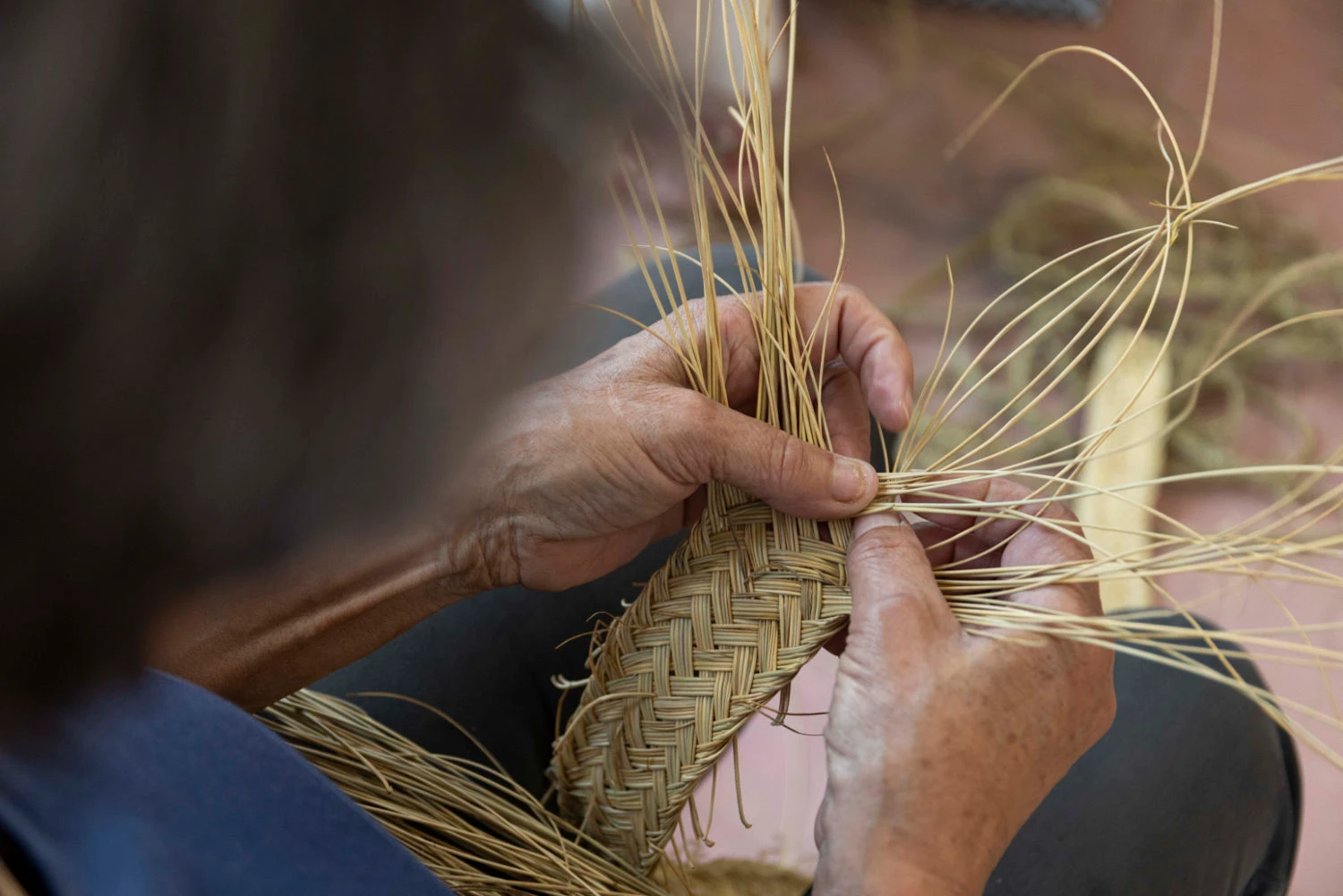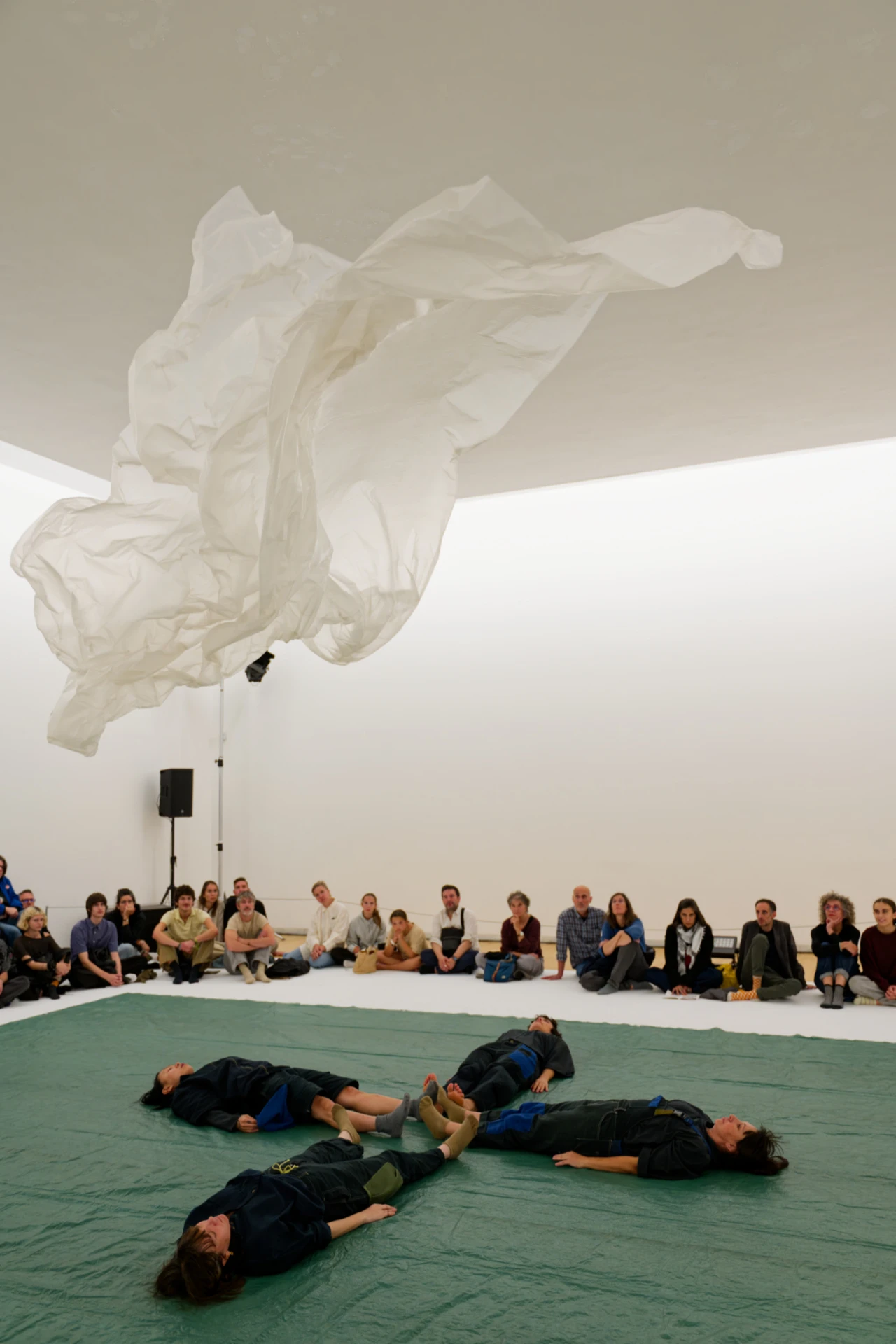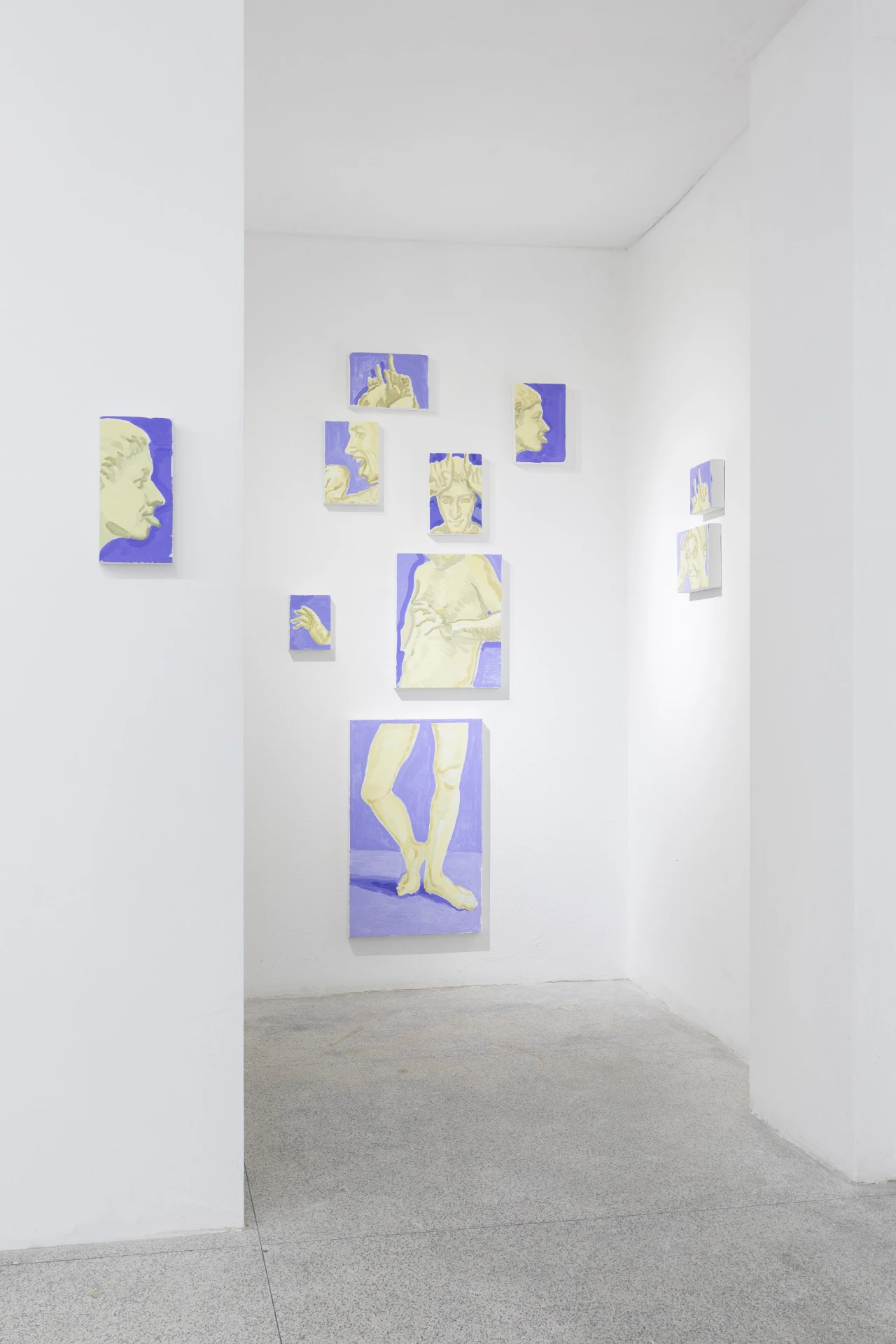article
Bicho de Seis Cabeças, by Abel Mota
What commonalities can we find between a graphic delirium, in which the human body becomes a vessel and generator of chimeras, a cat holding a phallic piece of meat between its teeth, a horse blowing a trumpet, and a naked man who, with his own hands, supports and lifts his breasts? The strange proximity between grotesque and comedic, between metamorphosis and spectacle.
Bicho de seis cabeças (Six-headed beast), a sequence of 30 small and large-scale drawings and paintings, resonates, with varying intensity, with the condition of comedy that Bergson established in 1900: the fact that human beings not only know how to laugh, but also offer themselves as a spectacle that makes others laugh. The laughter that vibrates in them is not just an individual reaction; it implies a collective echo, an unspoken complicity between observers, real or imaginary, who recognize, in burlesque forms, self-theatricality. Between donkeys and wolves, between human figures whose faces remain unseen, hidden behind an all-too-familiar mask, the stories of our childhood converge: animals that present themselves as humans, humans that hide in animal skins. There is no narrative that begins and ends, giving way to another. They intersect and interrupt each other; they are one thing in the distance, something else up close. And if some hide, others reveal themselves, holding the animal's cloak where they once hid. In this game of masks and performances, animal-becomings emerge, summoning both the imagery of fables and that of medieval bestiaries, in which animality serves as a distorted mirror of the human condition. A condition that oscillates between order and disorder, between the promise of meaning and the invasion of absurdity.
In a way, it is as if the gallery, right at the entrance, takes the place of a children's book. In children's books, figures are amusing and innocent in their strangeness. Many feature flaps, so that children can play “ where is it?” games, allowing them to discover hidden figures through touch. Abel Mota's drawings trigger a similar gaze. The collage, found in many of them and although immobile, acts as these flaps: sometimes highlighting, sometimes hiding, sometimes adding, sometimes canceling. The very arrangement of the drawings on tables reinforces this feeling: instead of being hung, they are presented to us as open pages, at the height of a leaning body, inviting the viewer to seek connections and piece together fragmented narratives. But in this case, there is no innocence or simple fun; it is a fable staged between the esoteric and the profane.
As we move forward, we see black and white gradually replaced by color. As we look up, we find a divided body: hands, legs, feet, and head become objects of choice. Further ahead, in the corridor, color breaks the rigidity of the line and restores a latent mobility to the forms.
However, it is only in the final wing of the gallery that we are truly surprised: there, at the climax, a work imposes itself before us, hidden from the peripheral gaze, standing out not only for its content but also for its scale. Três Tristes Tigres (Three Sad Tigers) suspends the smile, just as the verbalization of these three words interrupts the fluidity of speech. The title, taken from a nursery rhyme known to all, reinforces the ambivalence we experience: the innocent game of repetition, a childhood staple, is confronted with the grid that composes it, introducing a sense of confinement and, simultaneously, of a scene observed from a distance. On this chromatic stage, the tiger's skin, a predatory force, clashes with the vulnerability of the human figure. The tiger's strength emerges as a desired power, but one that is never fulfilled, as it always returns the subject to their fragility.
Returning to the door through which we entered, we come across the work that closes the exhibition: Auto-retrato com máscara (Self-portrait with a mask). If fragility was hinted at before, it is nullified here. The body appears full-frontal, almost defiant. The mask, by interrupting its function, unveils and reinforces an eccentric and disconcerting presence. It is at this moment, as we are leaving, that a question arises: if we had to choose, which part of ourselves would we pick? Let us remember, however, that this is not a real question. For we cannot choose. Both sides belong to us and are mutually contaminated. We are fragile and vulnerable, and at the same time grotesque and profane. Perhaps it is precisely in this attempt at control that the laughable nature of our being lies. All that remains for us to do, as Abel Mota does, is to explore and sharpen our curiosity about how these two forces intertwine.
Bicho de seis cabeças (Six-headed beast), by Abel Mota, is on display at Galeria Plato, in Porto, until October 17.
BIOGRAPHY
Débora Valeixo Rana (b. 1990, Lisbon, Portugal) is a philosophy teacher living in Porto. She graduated in Philosophy from the Faculty of Letters of the University of Porto (2011) and has a Master's degree in Teaching Philosophy in Secondary Education (2019). Her academic and professional career reflects a deep interest in the intersection between Art and Philosophy, a dialogue that led her, in 2022, to take up a master's degree in Artistic Studies and Art Criticism at the Faculty of Fine Arts of the University of Porto.
ADVERTISING
Previous
agenda

04 Oct 2025
Materiais Diversos kicked off yesterday in Alcanena and Minde
By Umbigo
Next
article

08 Oct 2025
UmbigoLAB Call: UmbigoLAB @ Loulé Criativo — until november 30!
By Umbigo
Related Posts



